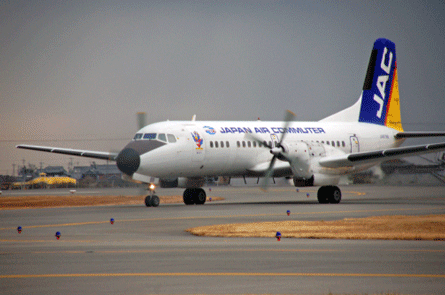There are mixed opinions about the success of the Nihon Aircraft Manufacturing YS-11, the last major Japanese passenger aircraft programme before the Mitsubishi Regional Jet.
In the late 1950s, Japan's Ministry of International Trade and Industry conceived the plan for the 60-seat turboprop as a way for its aerospace companies to get into the aircraft production business. That led to the formation of the NAMC, a consortium comprising Mitsubishi Heavy Industries, Kawasaki Heavy Industries, Fuji Heavy Industries, Shin Maywa, Showa Aircraft and NIPPI.
Mitsubishi was responsible for the final assembly and the forward fuselage, Fuji produced the tail unit, Kawasaki the wings and engine nacelles, NIPPI the ailerons and flaps, Shin Maywa the rear fuselage and Showa the light alloy honeycomb structural components. The Rolls-Royce Dart engine powered the YS-11.
NAMC began the design stage in 1959 and the firstYS-11 flew in August 1962. The type received Japanese certification two years later and entered service with the now-defunct Toa Airways in April 1965. By the time the production line closed in 1974, 182 YS-11s had been manufactured, including 23 for the Japanese military.
In performance terms, the YS-11 fared well against its two nearest rivals - the Fokker F27 and Vickers Viscount. It could carry more passengers than the 40-seat F27, which it replaced in Japan and many other markets, and was cheaper to fly than the four-engined Viscount. Financially, though, the programme is estimated to have lost ¥36 billion.
 |
|---|
©AirTeamImages/Andy MartinWhile the YS-11 performed well, the programme was considered a financial flop |
Part of the problem, say those familiar with the programme, was the lack of co-ordination within the consortium. "Each company pushed its own agenda. Things took longer to do than expected, and the programme was ultimately undermined from within," says one source.
To compound matters, Japan's inexperience in the passenger aircraft market meant that the YS-11 did not have a proper marketing and after-sales plan. "If Boeing had been in charge, for example, it would have put in place these plans that could have made the aircraft a commercial success. Many potential customers were not convinced, and that undermined sales," says a second source.
Japan then pursued the 7J7 150-seat passenger aircraft programme with Boeing, but that was cancelled in 1993 after 10 years of research. Tokyo also considered the YSX, a 75-100-seat aircraft similar to the Mitsubishi Regional Jet.
Potential partners like ATR, Saab, Boeing and some Asian companies were considered, but the programme was formally terminated in 1998. A 30-seat passenger aircraft was then proposed in 2002, but shelved in favour of the MRJ in 2007.
Source: Flight International



















